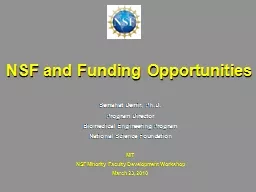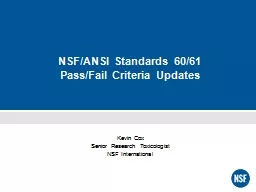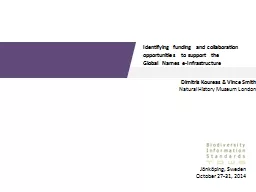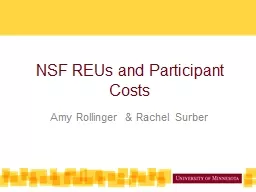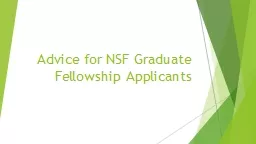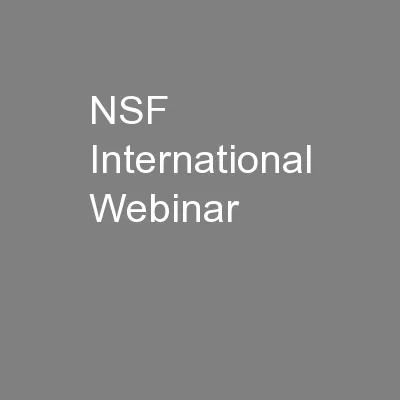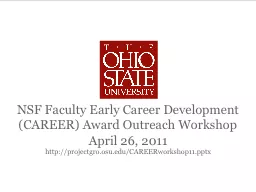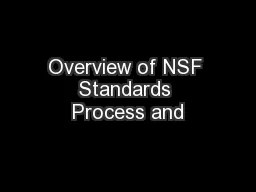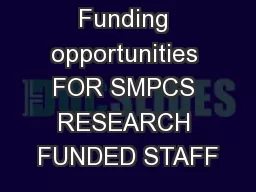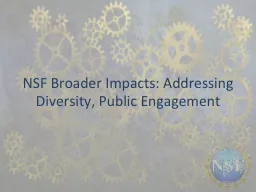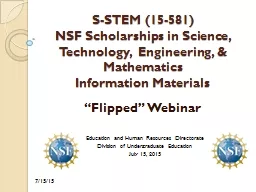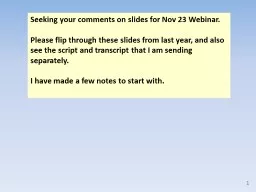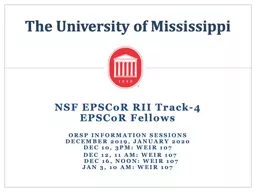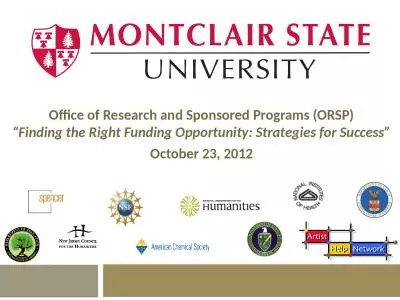PPT-NSF and Funding Opportunities
Author : jewelupper | Published Date : 2020-08-04
Semahat Demir PhD Program Director Biomedical Engineering Program National Science Foundation MIT NSF Minority Faculty Development Workshop March 23 2010 NSF
Presentation Embed Code
Download Presentation
Download Presentation The PPT/PDF document "NSF and Funding Opportunities" is the property of its rightful owner. Permission is granted to download and print the materials on this website for personal, non-commercial use only, and to display it on your personal computer provided you do not modify the materials and that you retain all copyright notices contained in the materials. By downloading content from our website, you accept the terms of this agreement.
NSF and Funding Opportunities: Transcript
Download Rules Of Document
"NSF and Funding Opportunities"The content belongs to its owner. You may download and print it for personal use, without modification, and keep all copyright notices. By downloading, you agree to these terms.
Related Documents

